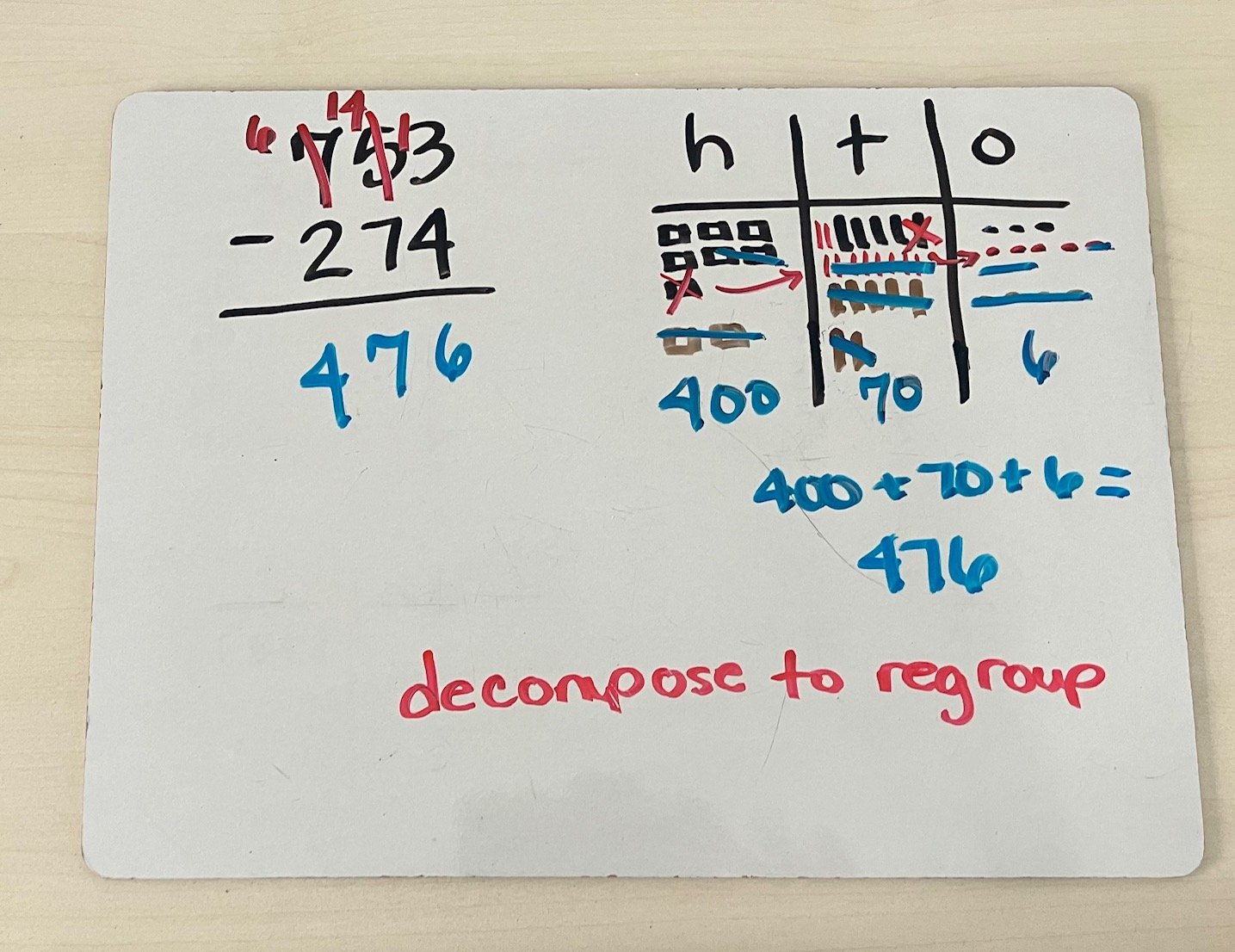Building Addition and Subtraction Skills
Hello.
Let’s talk about addition and subtraction skills and how they build and support learning in the later grades.
Let’s start with kindergarten. In kindergarten, students need to be able to identify, compose and decompose (break down) numbers 0 to 19. They will learn how to do this using equations (10 + 3 = 13), pictures and an understanding that some numbers are composed of ones or a ten and some ones. This understanding of differentiating between tens and ones and identifying a ten is critical for first grade.
In first grade, students need to know how to add within 100 (2-digit + 1-digit or a 2-digit + a multiple of 10). They will also explore the relationship between addition and subtraction (20 + 5 = 25, 25 - 5 = 20, 25 - 20 = 5). To do this, students will learn how to use place value strategies, concrete models, pictures, composing a ten and properties of operations.
In second grade, students will build on this knowledge to add and subtract numbers within 1000 using many of the same strategies including decomposing a ten to subtract and exploring the relationship between addition and subtraction.
In third grade, students will continue to build fluency adding and subtracting whole numbers within 1000 using place value strategies, properties of operations, and the relationship between addition and subtraction. Students will need to expand on their understanding of regrouping (composing and decomposing a ten) and how that applies to the algorithms.
In fourth grade, students will continue to develop their fluency adding and subtracting multi-digit whole numbers. The focus moves to using algorithms, and students are expected to fluently regroup as they solve these problems.
In fifth grade, students are expected to fluently add and subtract multi-digit numbers that include decimal values to the hundredth. Students must be able to apply their knowledge of concrete models, place value, properties of operations, the relationship between addition and subtraction and how to compose and decompose a ten to solve these problems.
The most common problem for students is composing or decomposing a ten to regroup when adding and subtracting. I touched on this briefly in my first blog post, Let’s Talk About Math. This is a skill that is initially developed in kindergarten when students learn to identify a ten and that a 2-digit number is made up of a ten and some ones. Students learn more about this concept in first grade when they practice making tens and use concrete models and place value models to describe the number of tens and ones in a given number.
In second grade, students learn how to represent a number by its tens and ones using models. They also learn how to decompose numbers into tens and ones to subtract, and they learn how to compose numbers into tens and ones to add. This is the critical foundational knowledge that leads to success with regrouping problems in later grades. For students to be able to fluently add and subtract with regrouping, they will need to practice and master this skill.
Email me or fill out the contact form for your free consultation on how I can help.
















